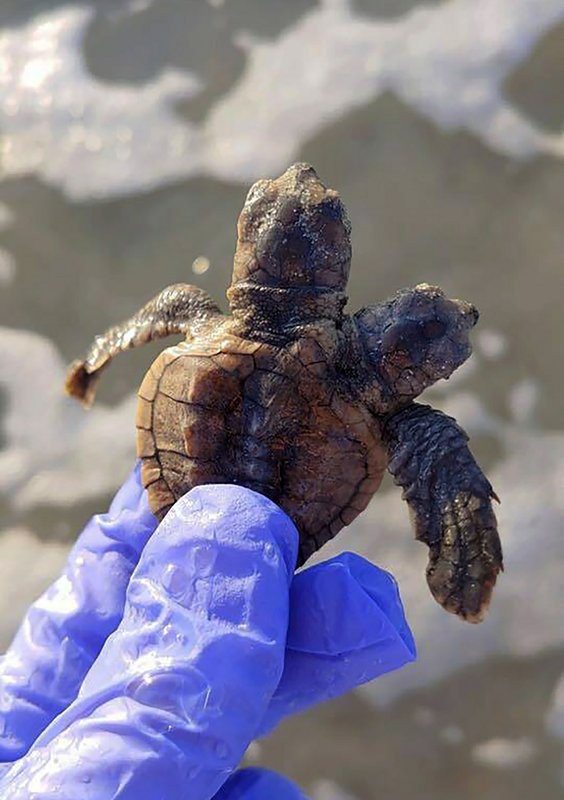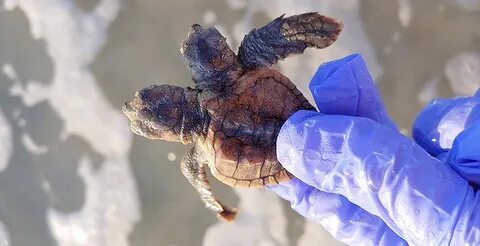A sea turtle monitoring team in the town of Hilton Head Island, South Carolina has just discovered a newly hatched two-headed turtle belonging to the species of Quan Dong Tortoise.

Two-headed sea turtle found in South Carolina. Photo: Sea Turtle Patrol Hilton Head Island
The Hilton Head Island Sea Turtle Monitoring Group said the live, newly hatched turtle was found on August 27 and released back into the ocean.
Team leader and marine biologist Amber Kuehn said a genetic mutation was responsible for the turtle’s second head, named Squirt and Crush.
The conservation group shared a photo of the turtle on Facebook on August 28, showing a small part of the creature’s body hidden by gloves. Post with content wishing the turtle good luck.
“We think we’ve seen them all during this busy time on the Sea Turtle Monitoring Group’s page! Yesterday, while checking out turtle nests, a newly hatched turtle with two heads was discovered. The mutation was discovered. biology is more common in reptiles than in other animals but this is still very rare.Along with newborn turtles found during nest inspection, this turtle has been released back into the ocean. lucky Squirt and Crush,” wrote the Hilton Head Island Sea Turtle Monitoring Group.
Marine biologist Kuehn said Crush and Squirt turtles can’t swim because the two heads control different flippers and can’t cooperate.
It remains unclear how this deformity will affect the turtle’s chances of survival. However, this should be noticed in all young turtles facing extreme oddities. Only about 1 in 1,000 to 10,000 turtles survive to adulthood, according to the Sea Turtle Conservancy.
In 2017, when a similar two-headed tortoise was found in Florida, Kate Mansfield from the University of Central Florida’s Sea Turtle Research Group told National Geographic television: “they may exist but the chances are quite low”.
